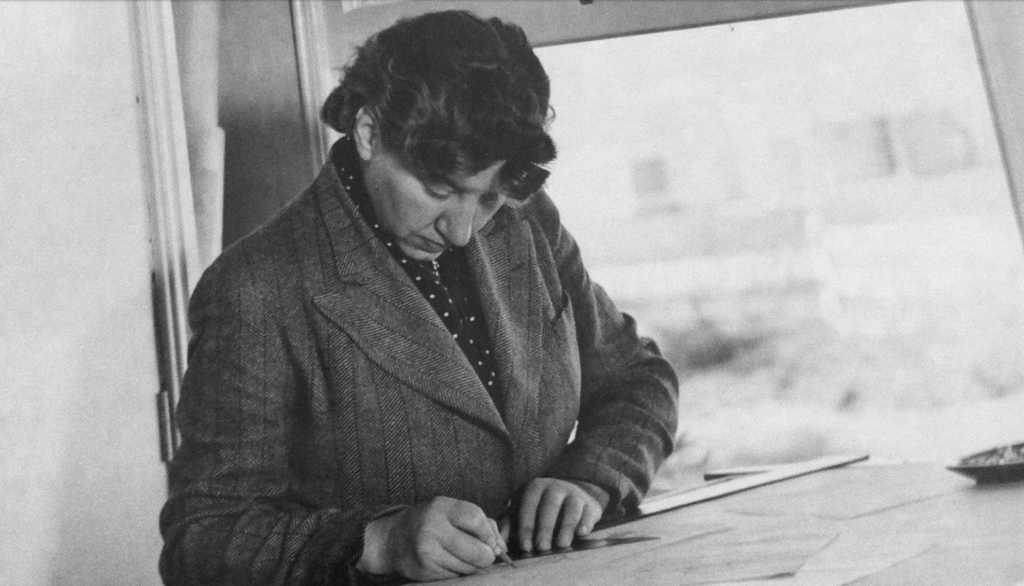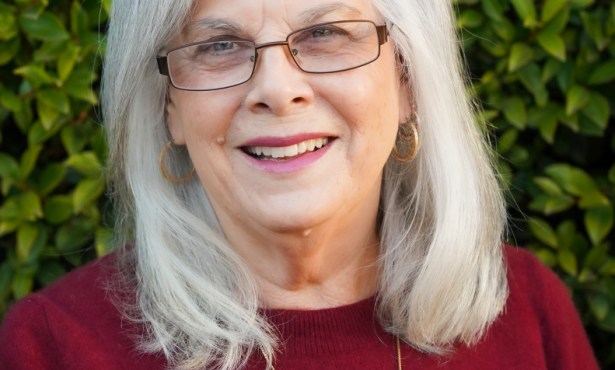Lutah Maria Riggs, FAIA
A Life Dedicated to Architecture with an Impact on Santa Barbara

There has been much written about Lutah Maria Riggs over the years. There is even a short documentary about the first female architect in California to be elevated to the College of Fellows in the American Institute of Architects. You can obtain a copy of the DVD from the Lutah Maria Riggs Society (lutah.org).
Riggs came into the world in the usual way, the only child of a doctor and homemaker in 1896 in the town of Toledo, Ohio. She never married or had children herself. Due to circumstances that are not really clear, her father abandoned her and her mother when Riggs was just a toddler. He never returned. This seemed to be a common occurrence for that time — similar events afflicted Frank Lloyd Wright in his early days.
She knew she wanted to be an architect — once saying, “I dedicated myself to architecture … It comes first, I come last.” Perhaps this was one of the reasons she never married and was unable to keep business partners for very long. She was strong-minded and knew what she wanted, having little tolerance for those intent on placing roadblocks in her path.
After graduating from high school in 1914, Riggs moved to Santa Barbara with her mother and attended Santa Barbara City College until 1917 before transferring to UC Berkeley, where she completed her architectural studies in 1919. She then set out on her quest to live her dream by designing buildings. She had a very difficult time finding work in those days because the profession, like many, was dominated by men — most of whom did not fancy the idea of a woman architect. Interestingly, nor did the wives of these architects. In the early 1920s, Riggs returned to Santa Barbara to care for her ailing mother. Hearing that area architect George Washington Smith was looking for help, she applied. She was given a week to prove herself, and not even given a chair to sit and draw, she stood the entire week. The following week, she was hired and provided with a chair.
Riggs was a master illustrator and drafter. She quickly gained increased responsibility in the Smith firm and eventually became a partner with Smith. She and others carried on his practice for a few years after his sudden death in 1930 until the existing projects were completed. Riggs is thus responsible for the drawings and design elements of many of Santa Barbara’s most notable buildings created under the Smith masthead: the Lobero Theatre, the El Paseo complex, and Casa del Herrero, to name just a few.
While she did complete a number of commercial projects, clearly her passion was for residential buildings. There are many still present in the community — most very private, so it is difficult to see them. Among some of her notable projects under her own hand are the Santa Barbara Cemetery Chapel and site, the Baron and Baroness Maximilian von Romberg residence, and Wright Ludington’s residence. Ludington was an avid art collector and was responsible for a wing at the Santa Barbara Museum of Art.
Riggs passed in 1984, and a few year prior, the American Institute of Architects Santa Barbara Chapter created the Lutah Maria Riggs award in her honor. She became the first recipient of the award, which is bestowed upon an individual in the community who has made a significant contribution to the built environment or set a high standard in service to the public. A few of the past recipients include Lutah Maria Riggs, FAIA (1979); the Architectural Firm of Edwards and Pitman (1980); Fred Noel, AIA (1982); David Gebhard, HAIA (1986); Jean Graffy (1988); and Brian Cearnal, AIA (2017).
Robert Ooley, FAIA, is vice president of AIASB. He can be reached at robert@ooley.com. Architecturally Speaking is written by members of the American Institute of Architects’ Santa Barbara chapter.



